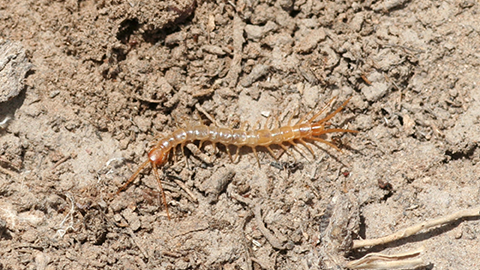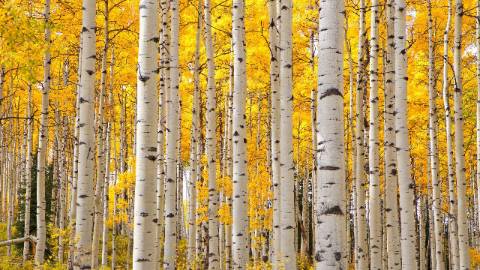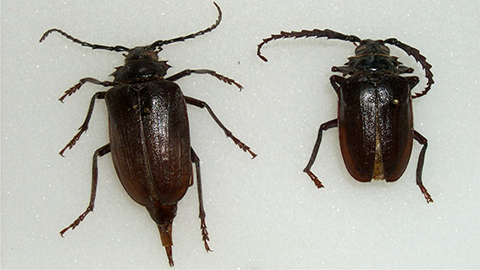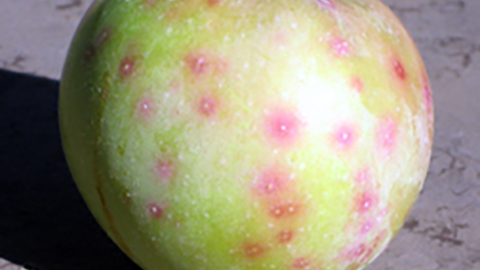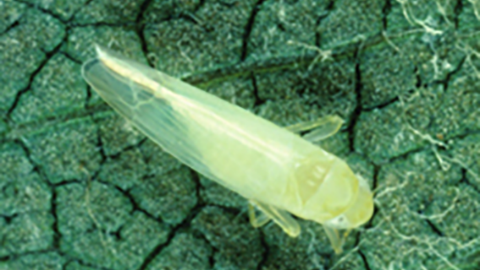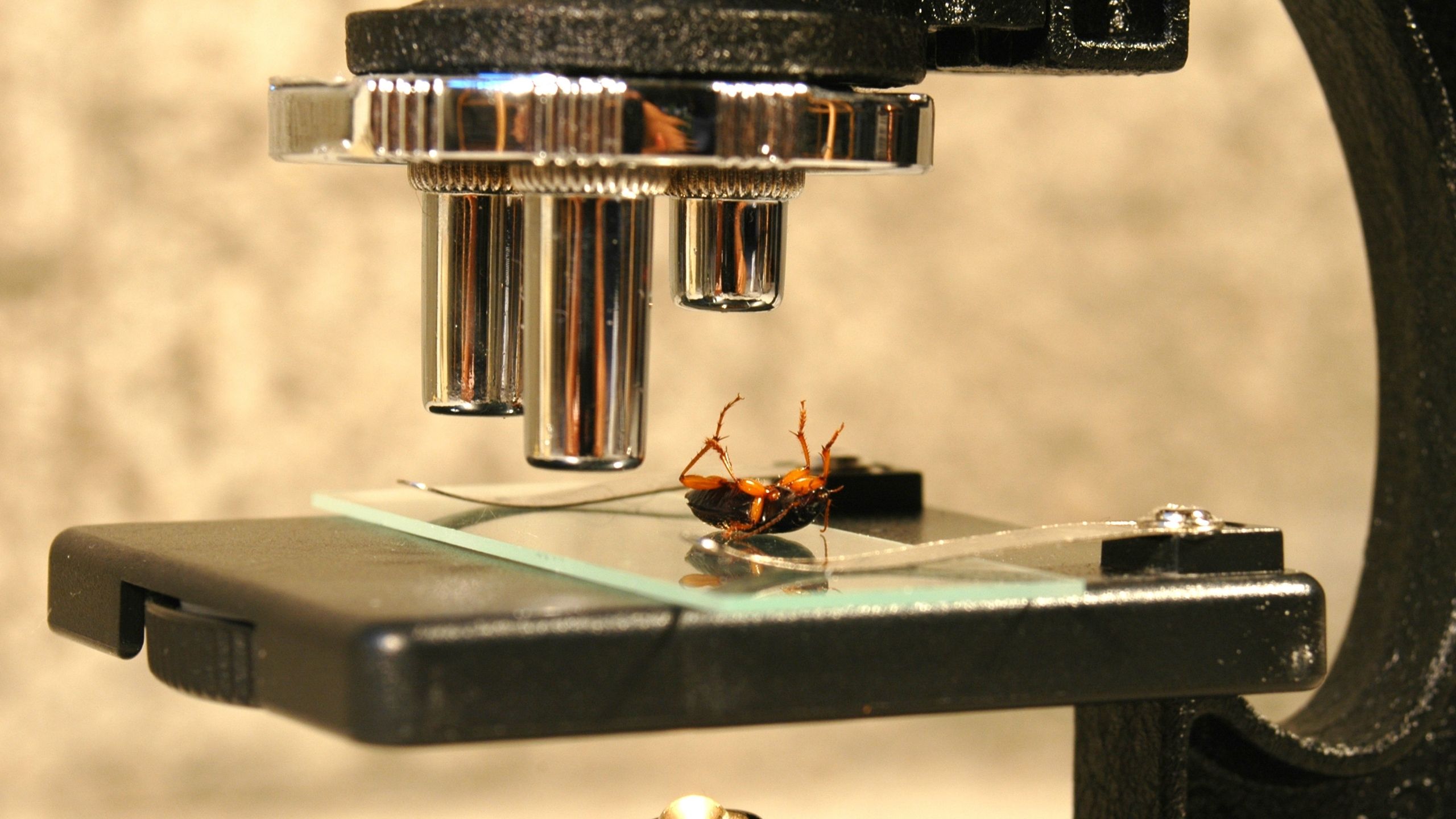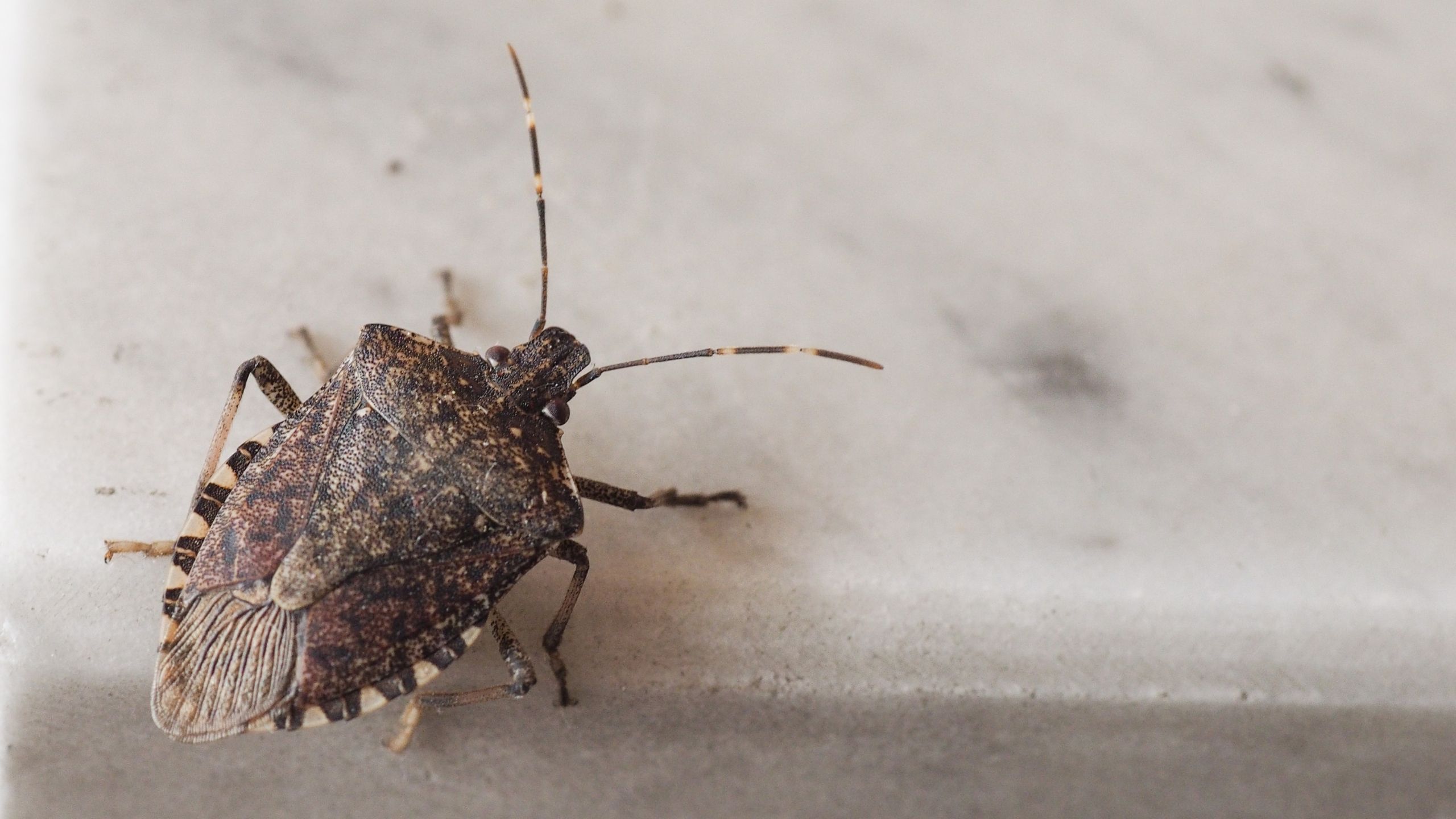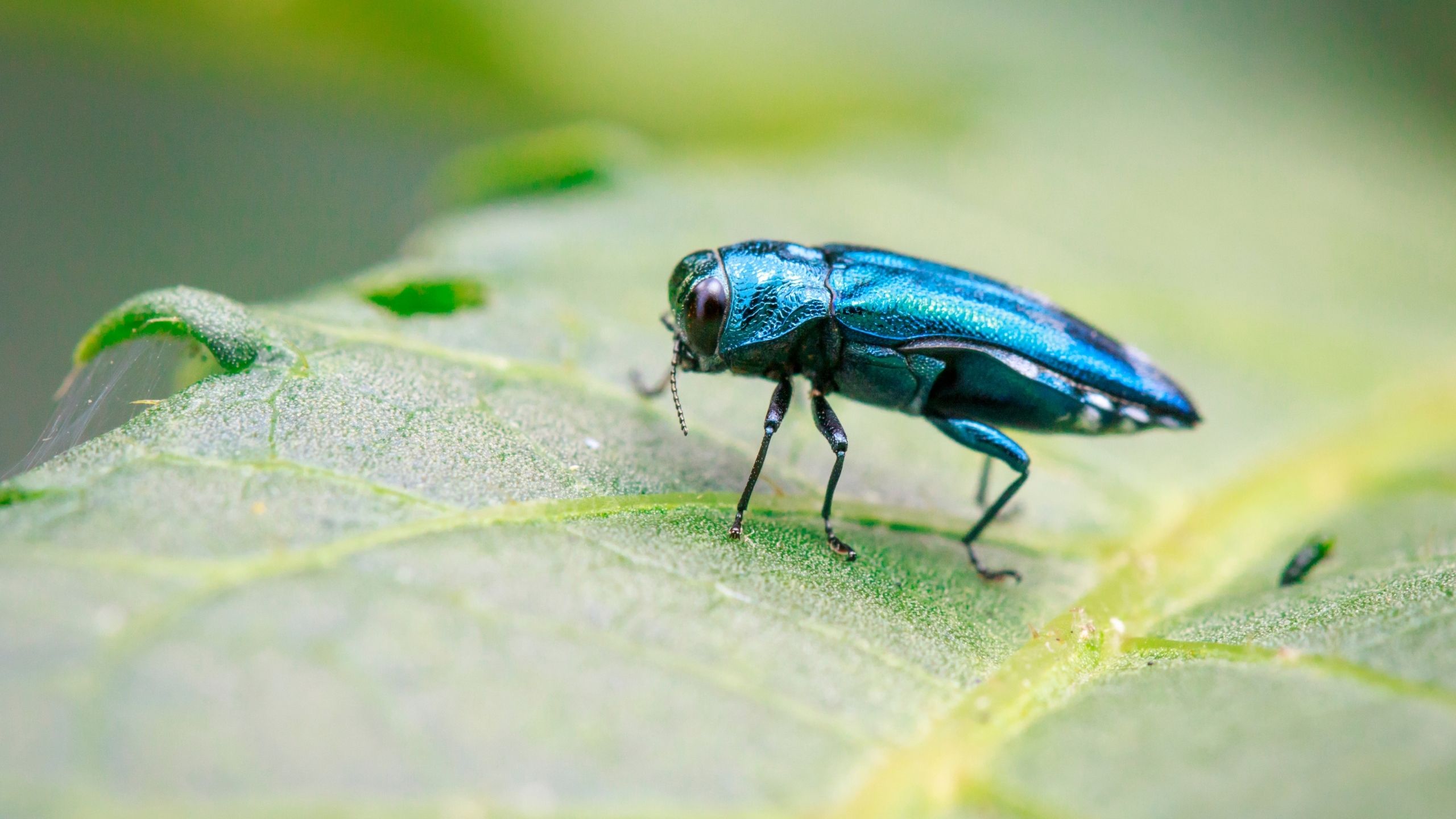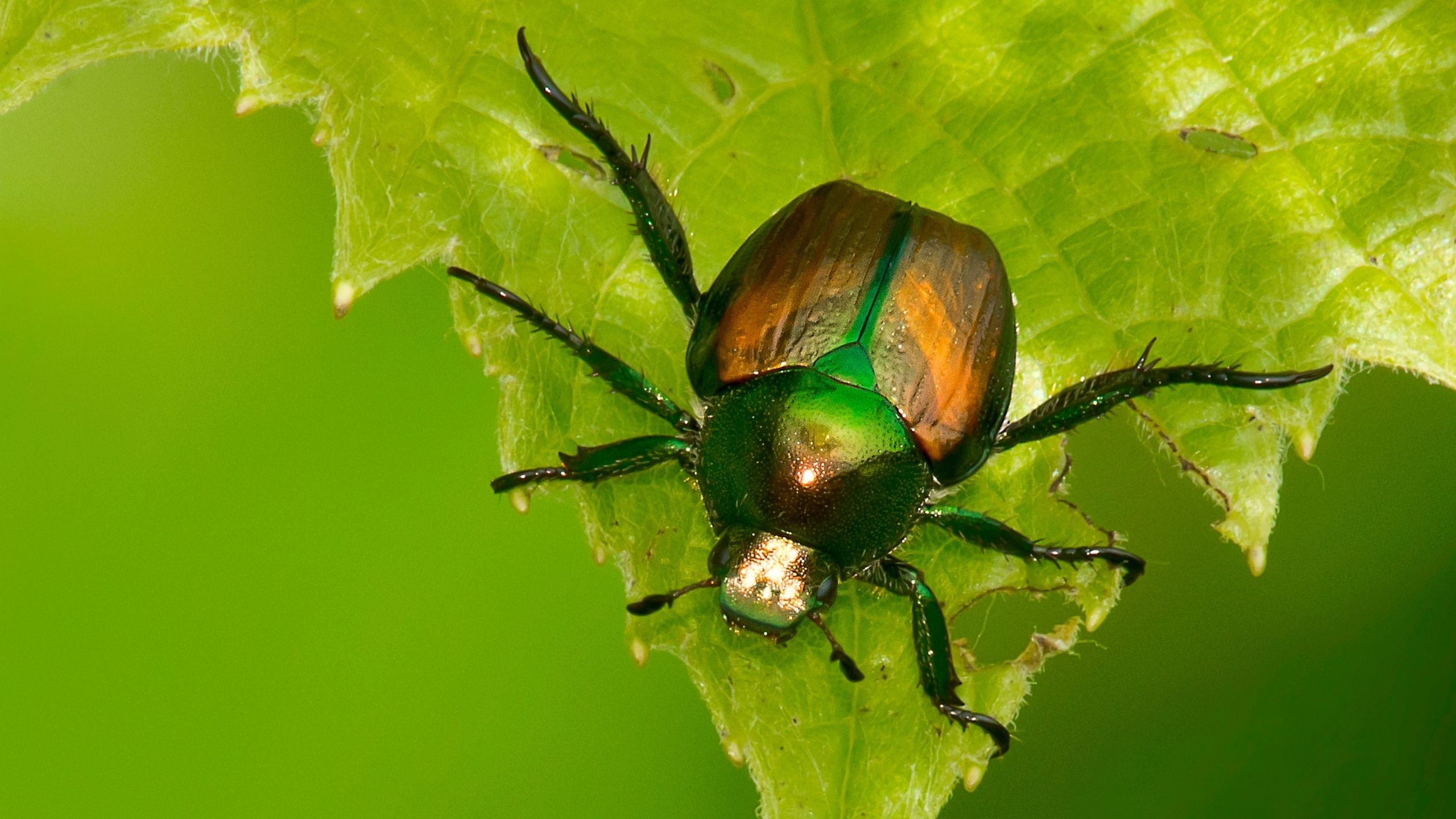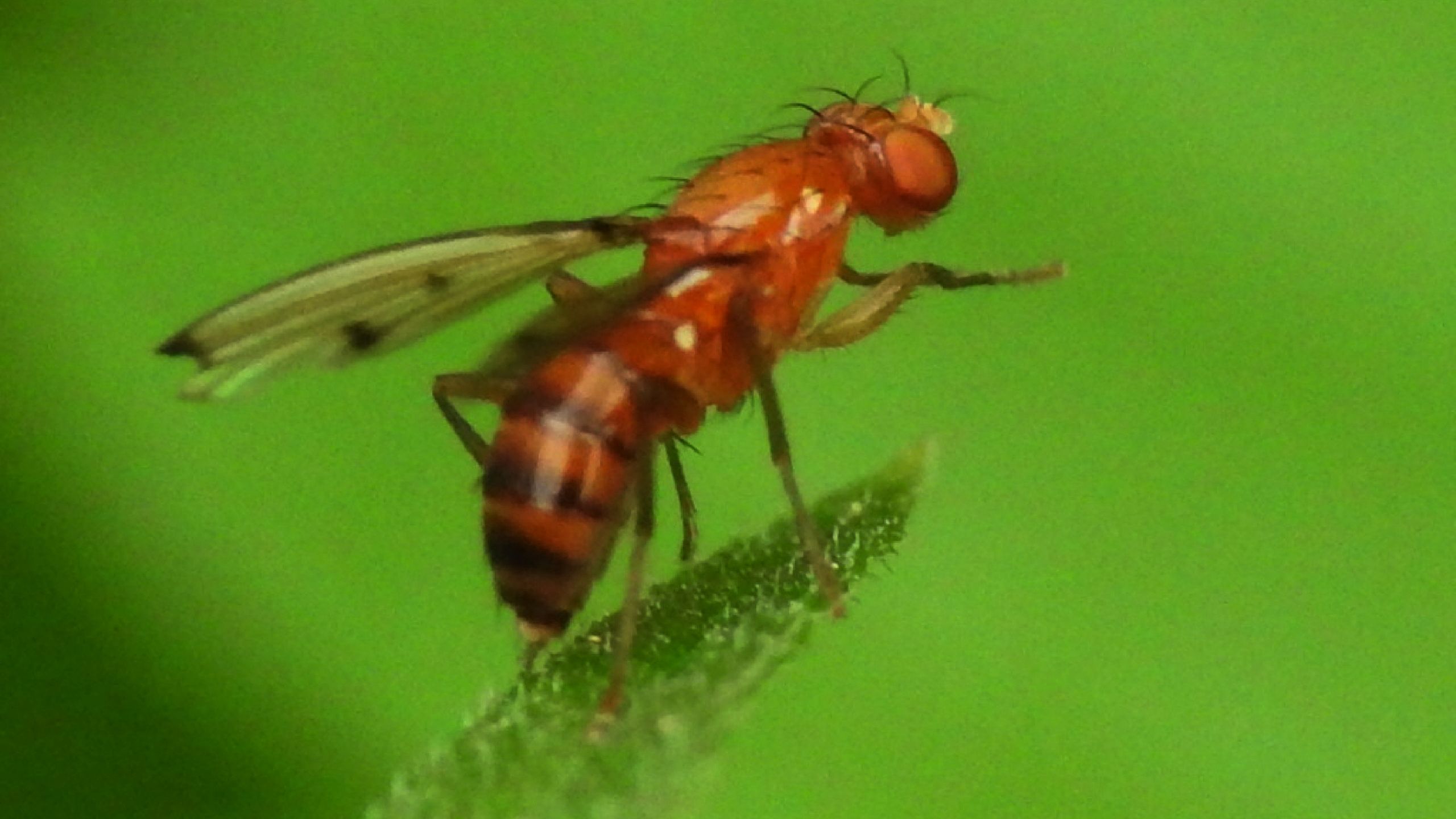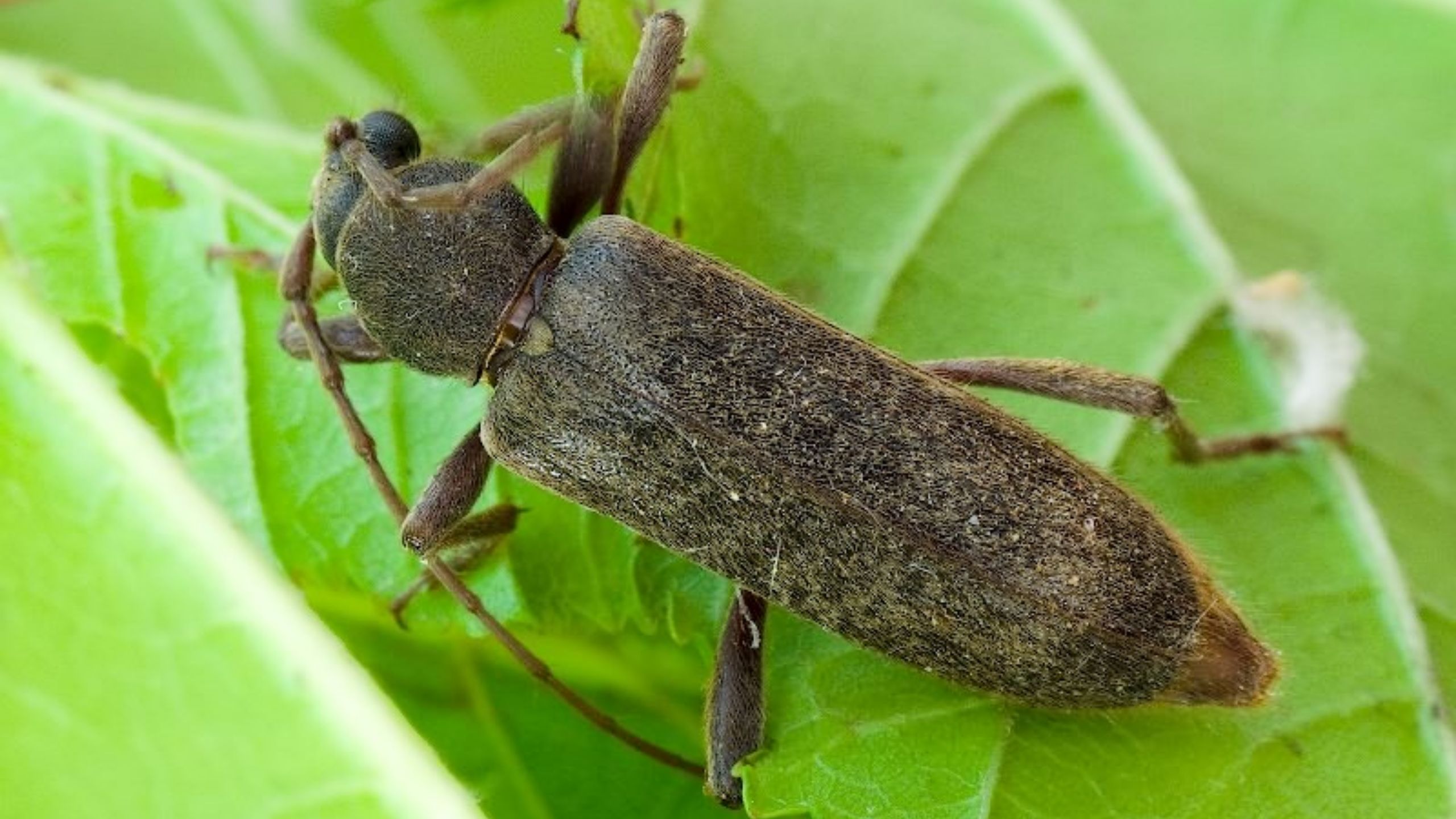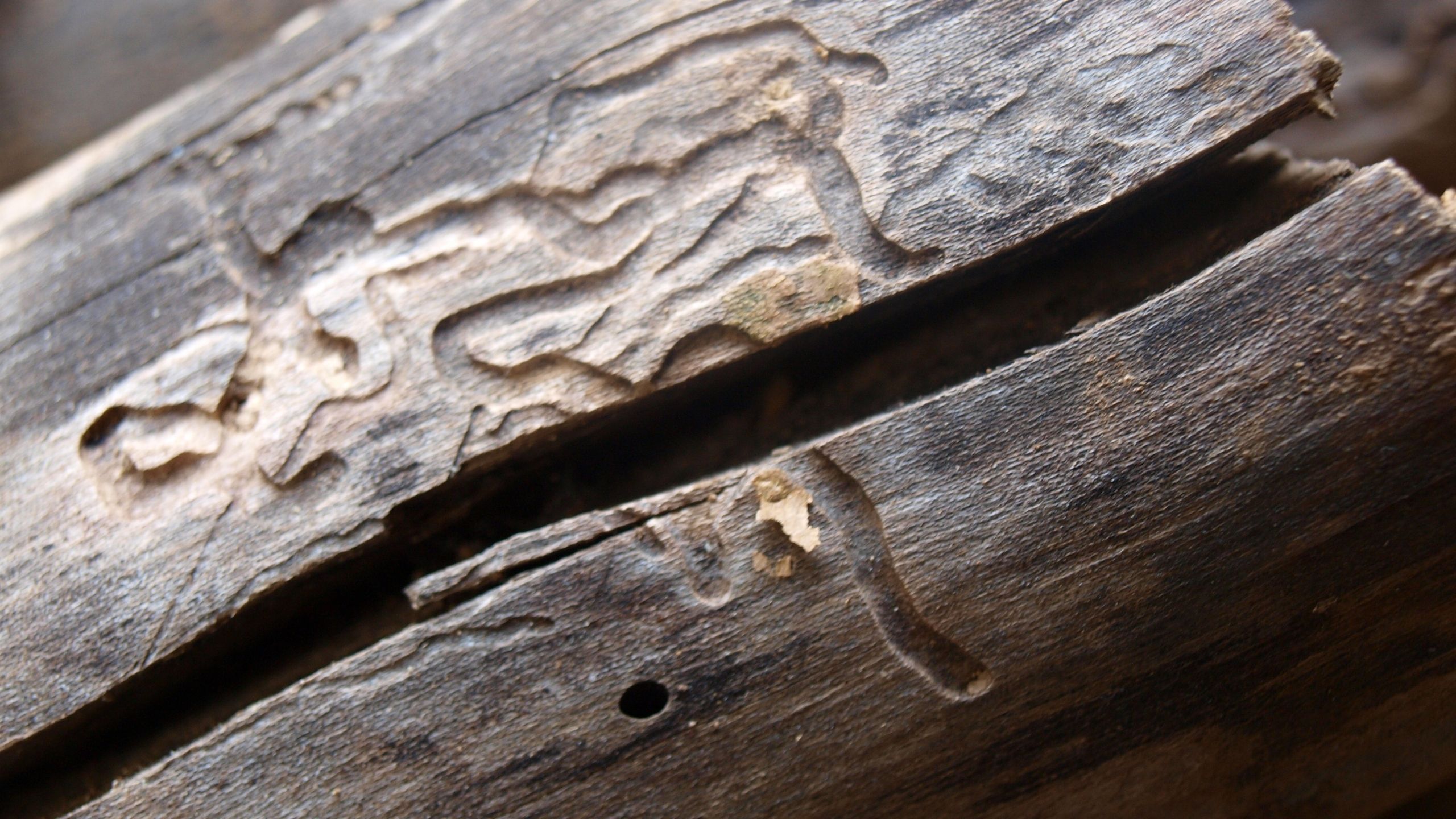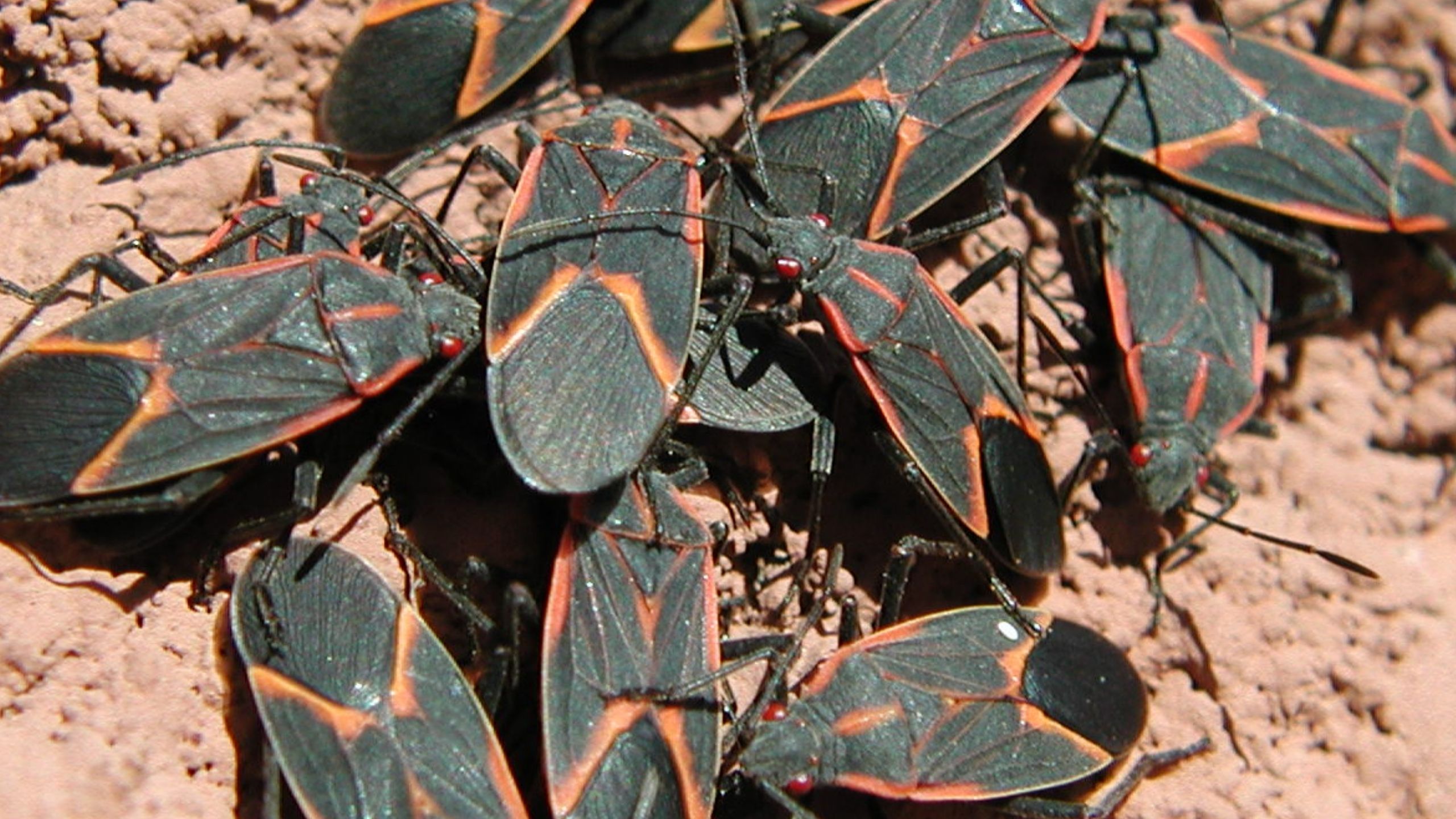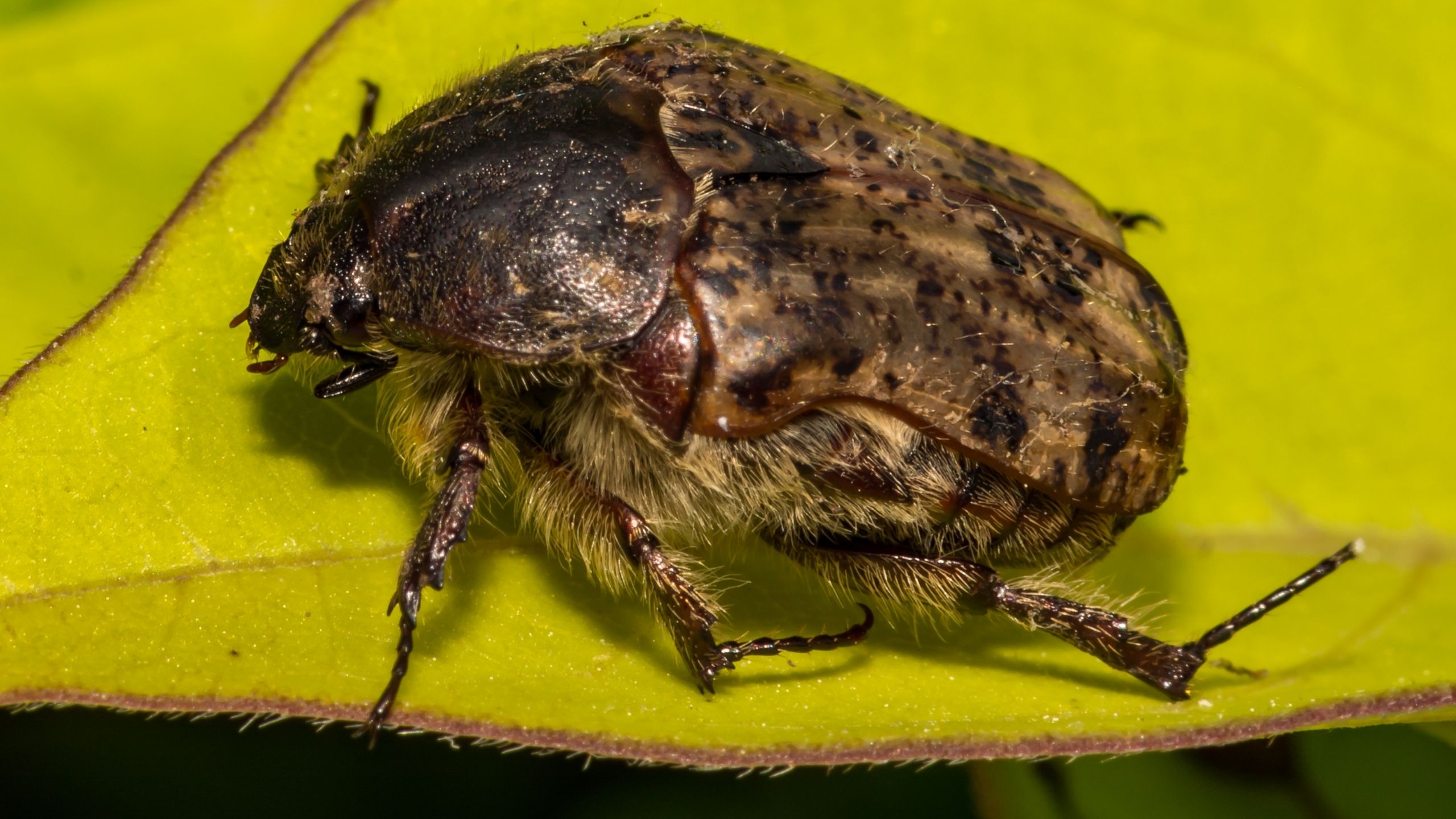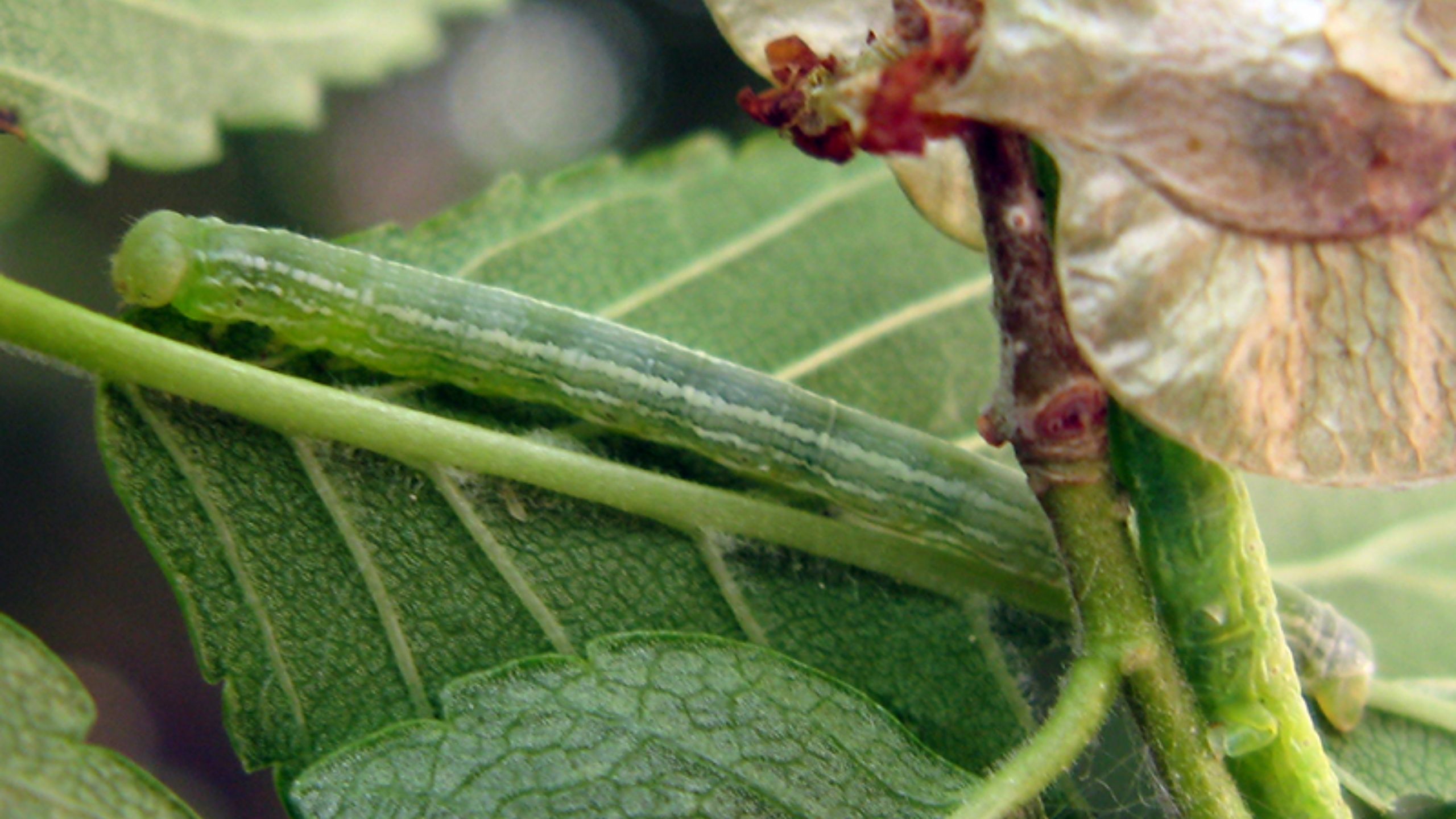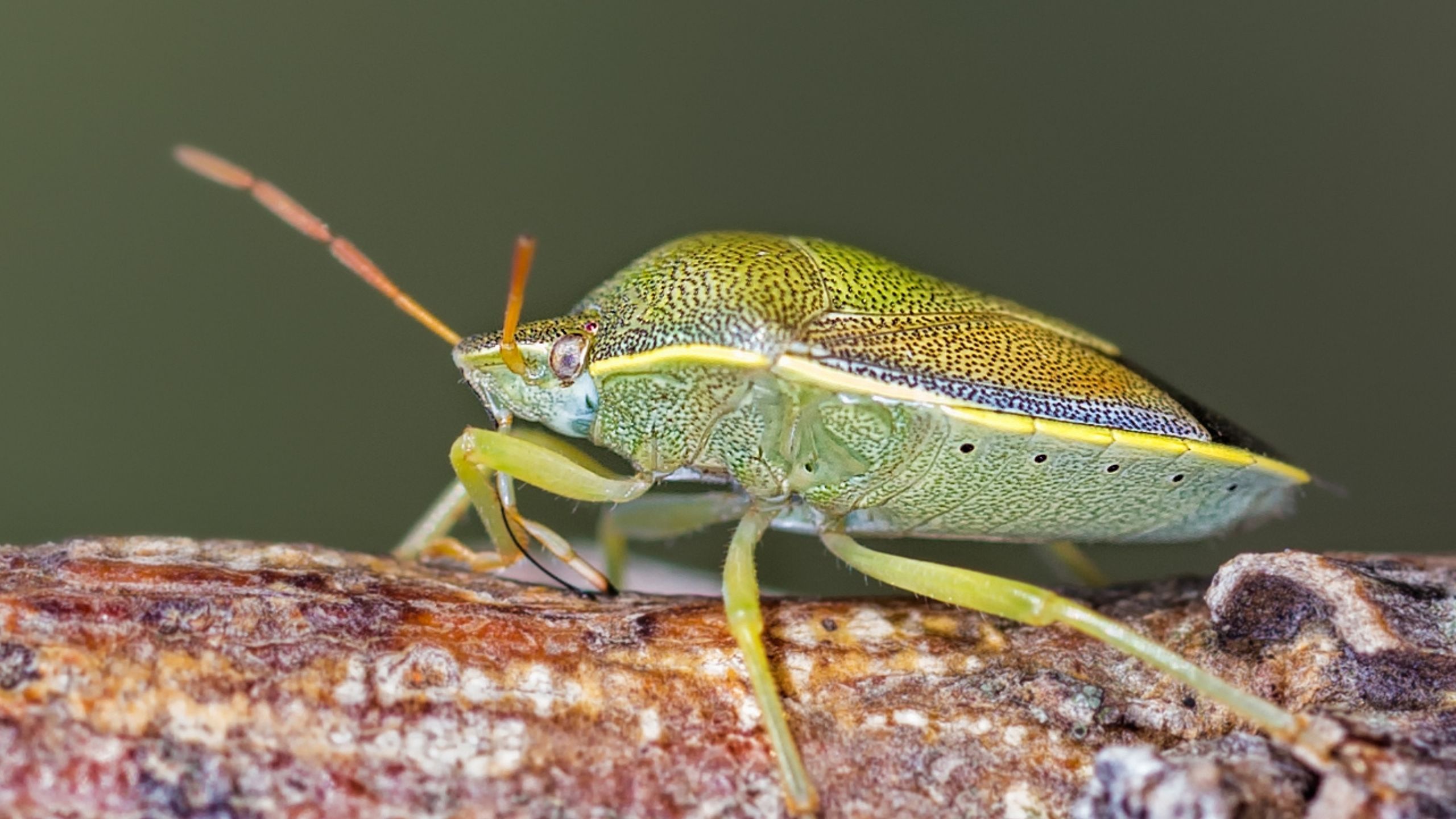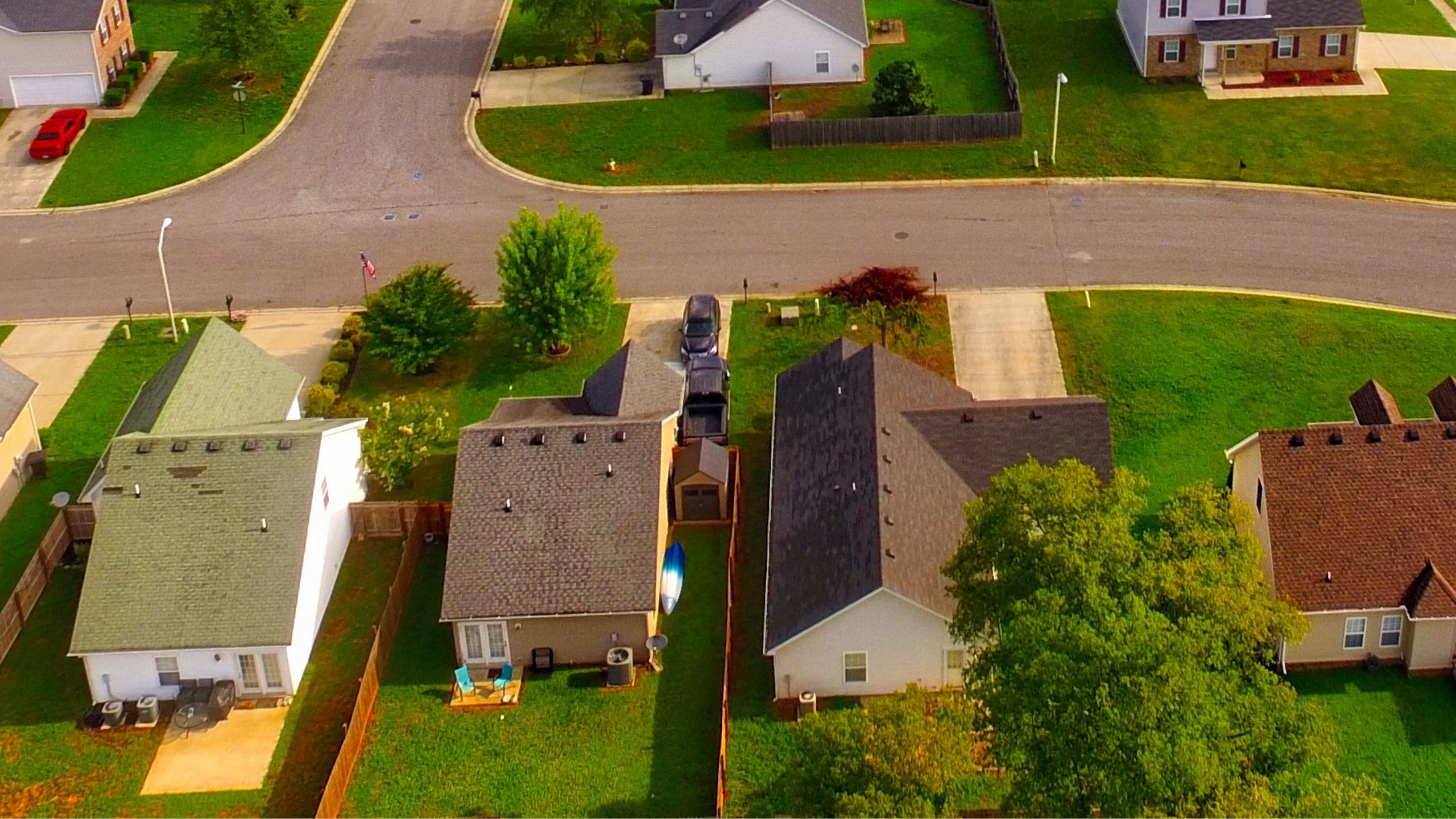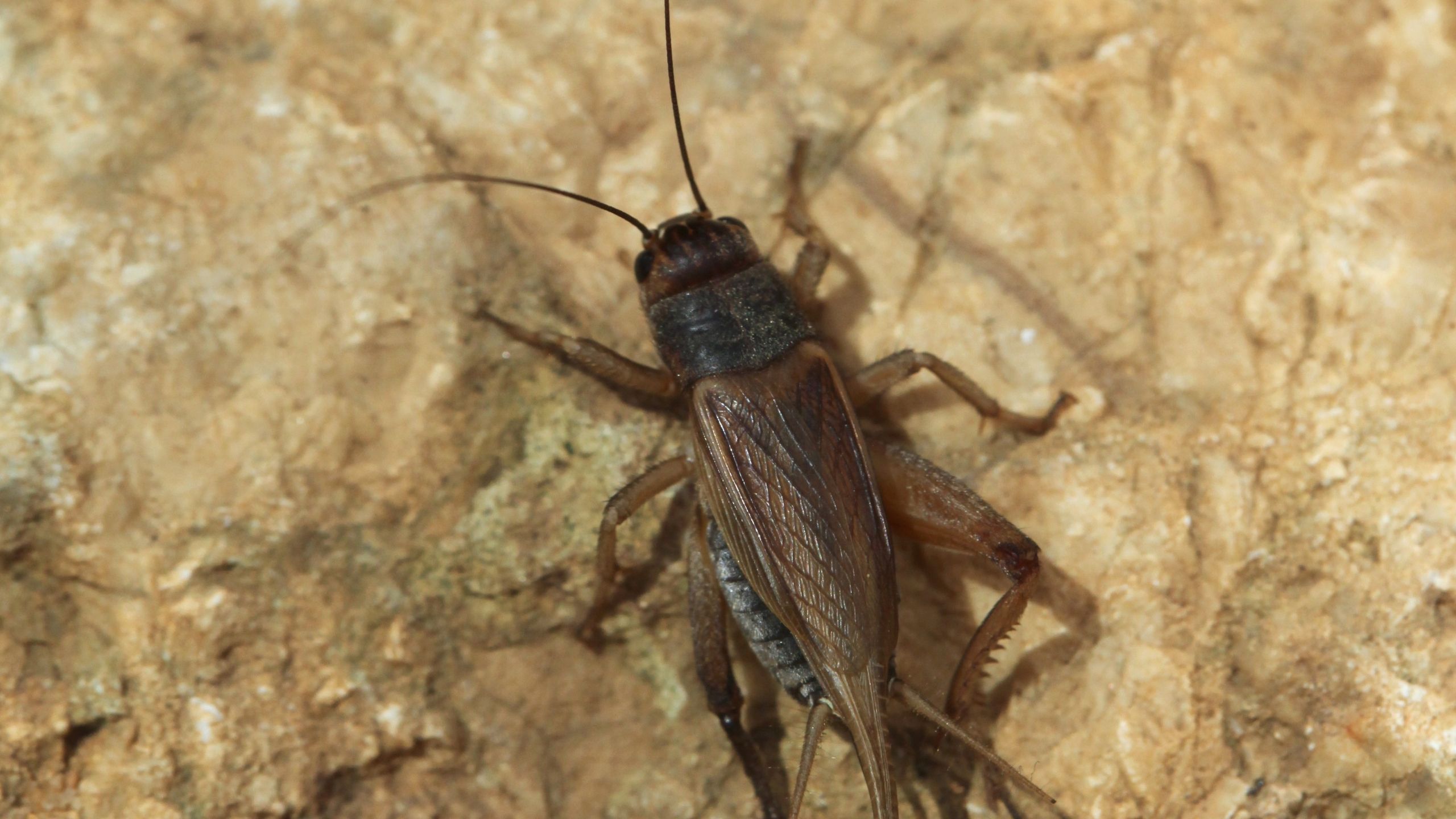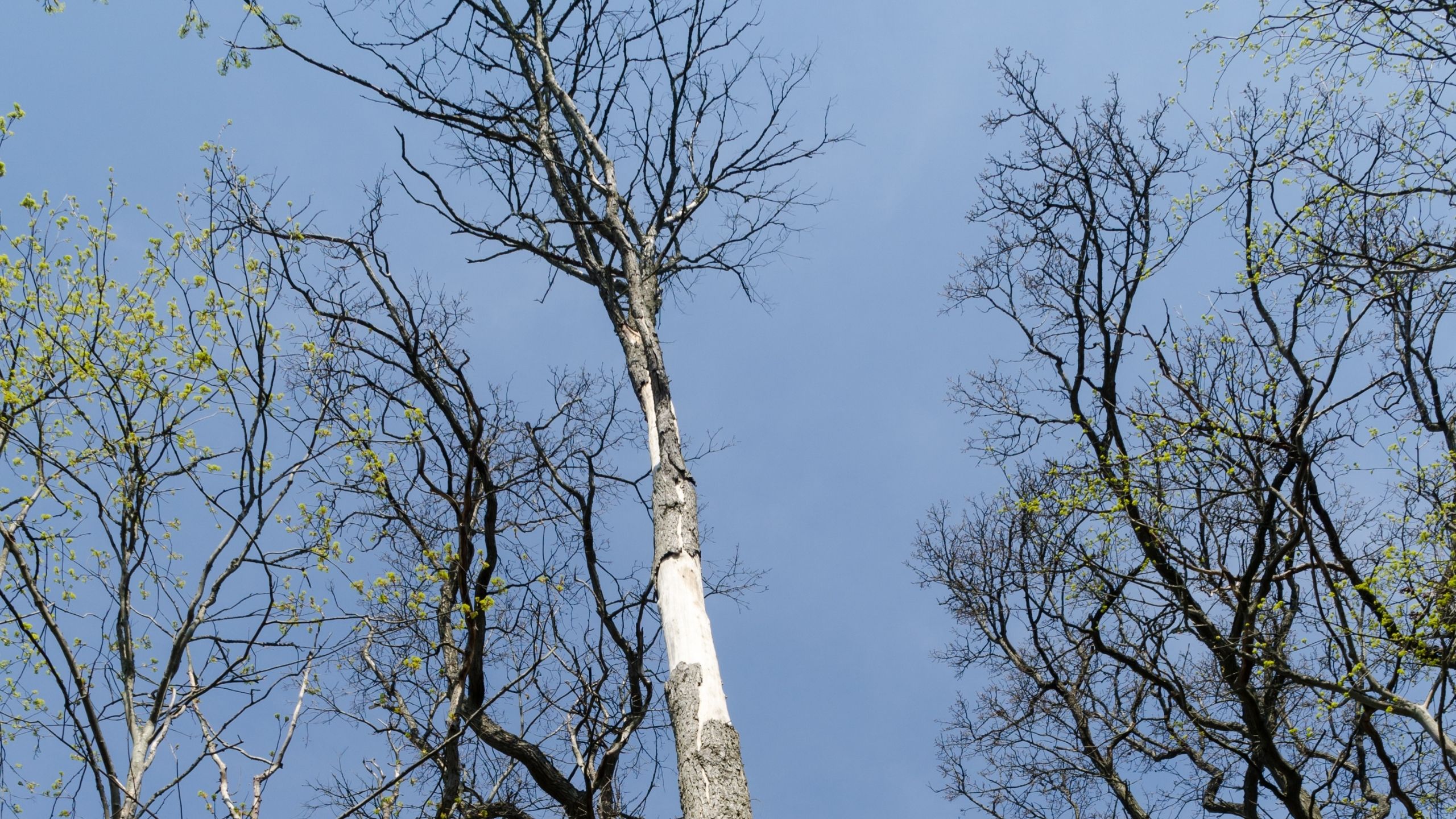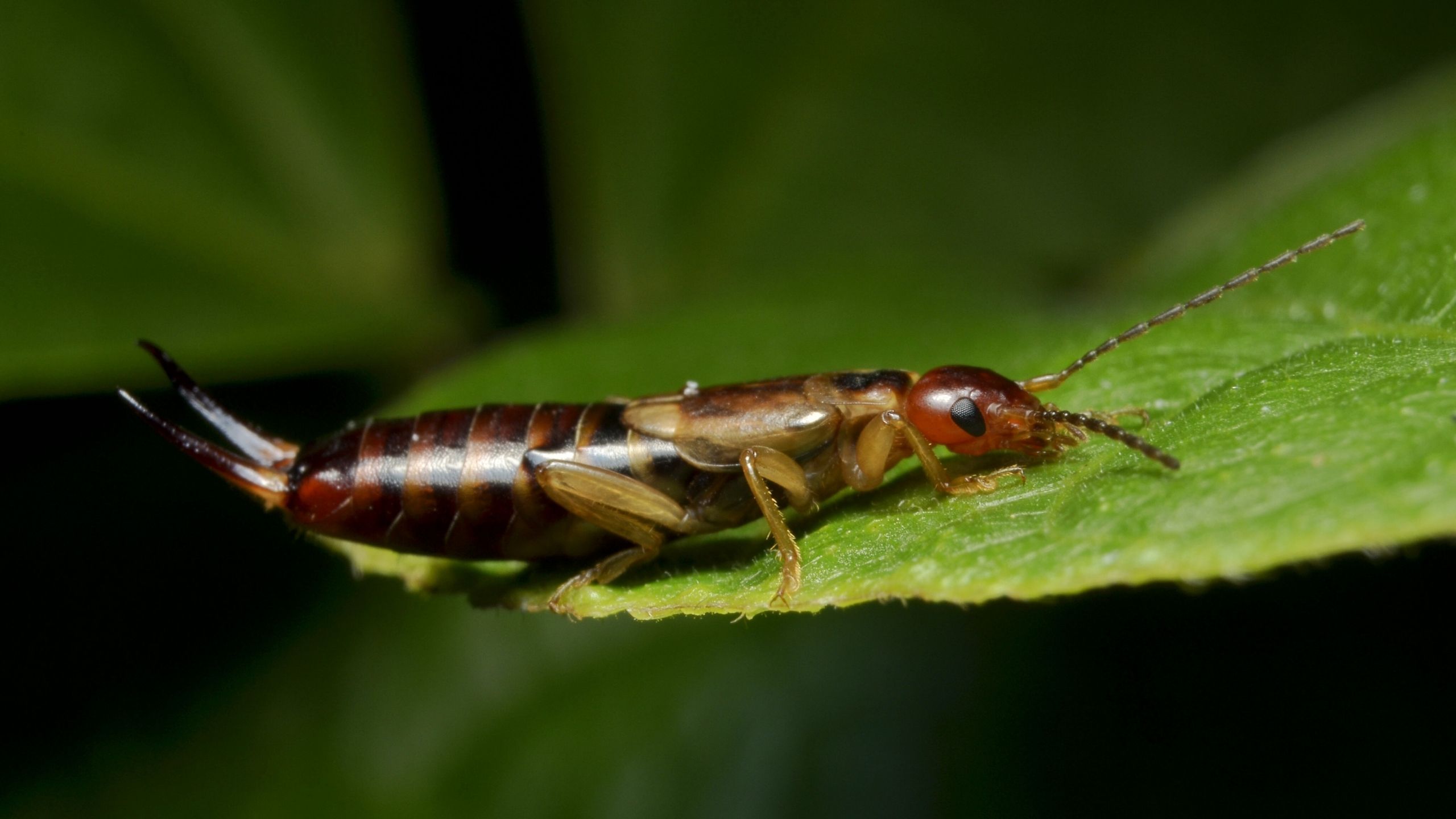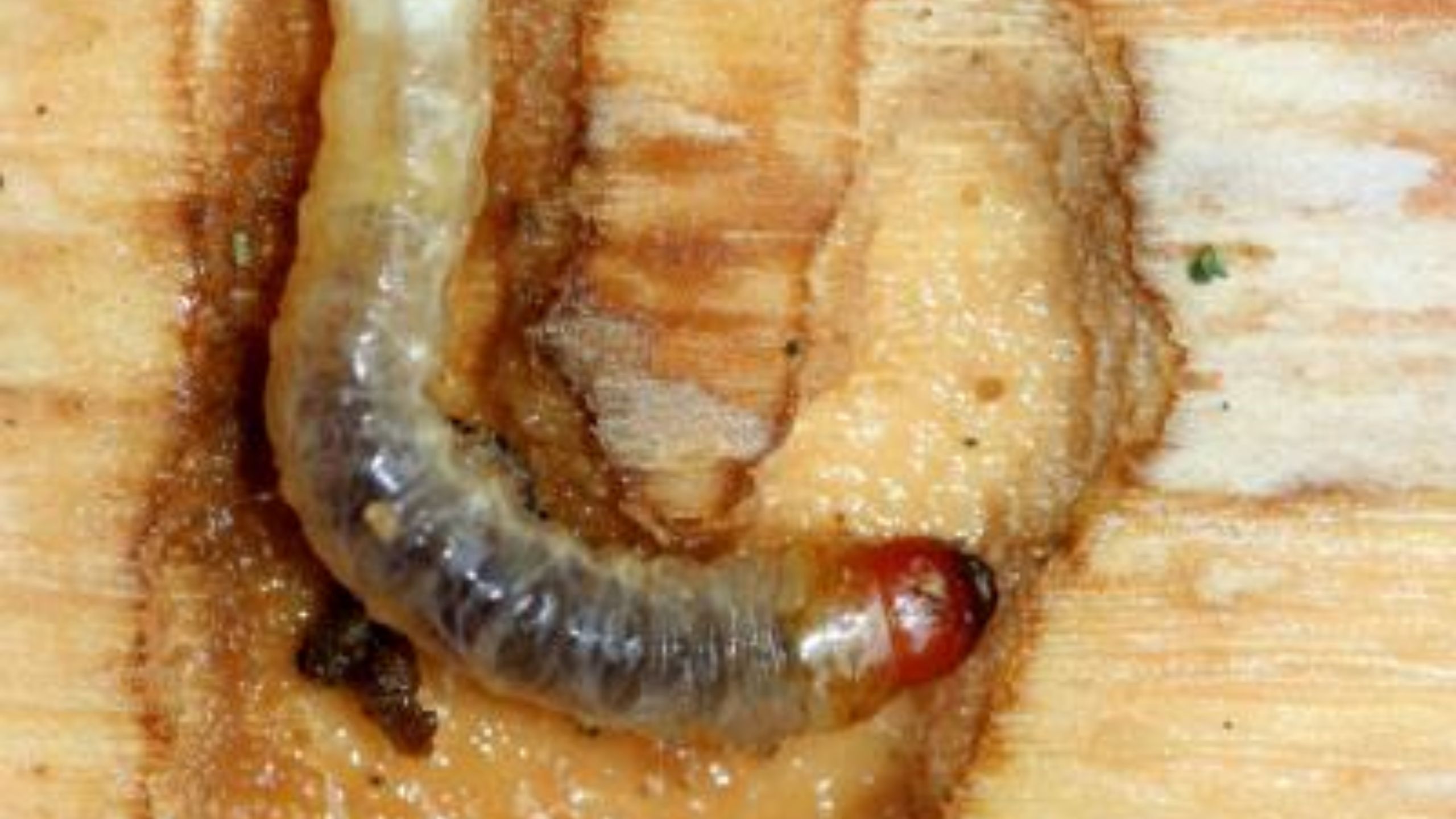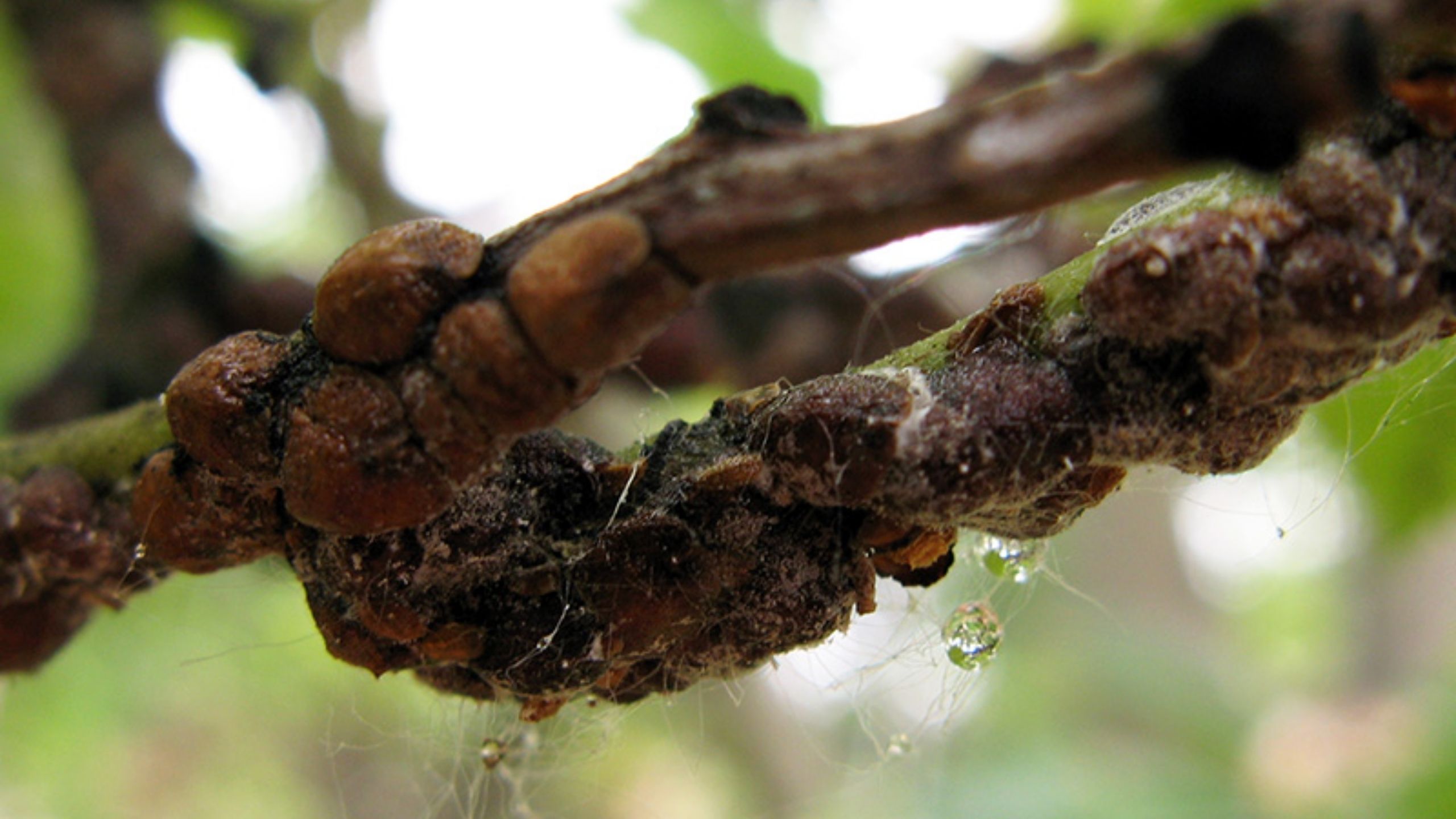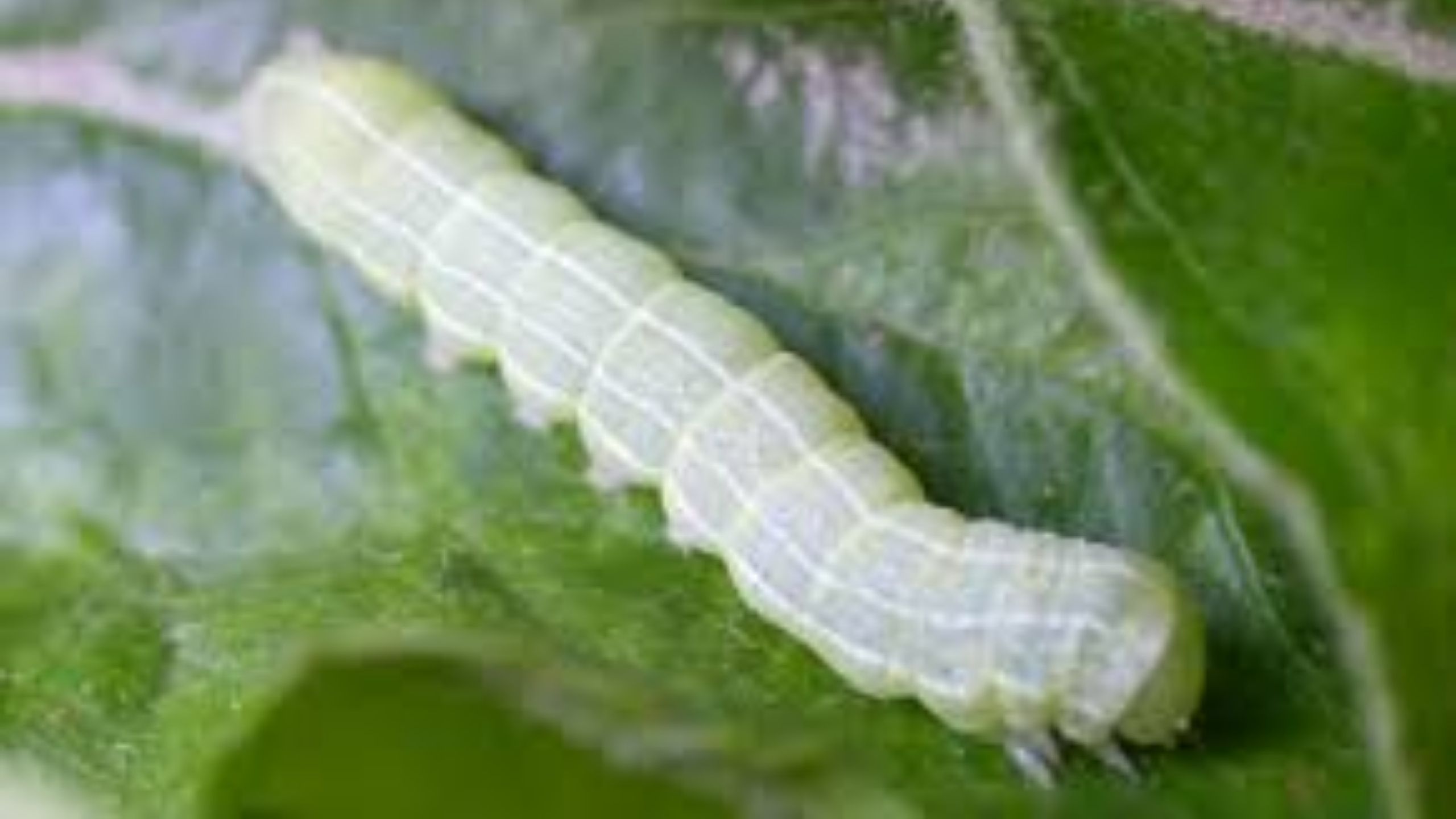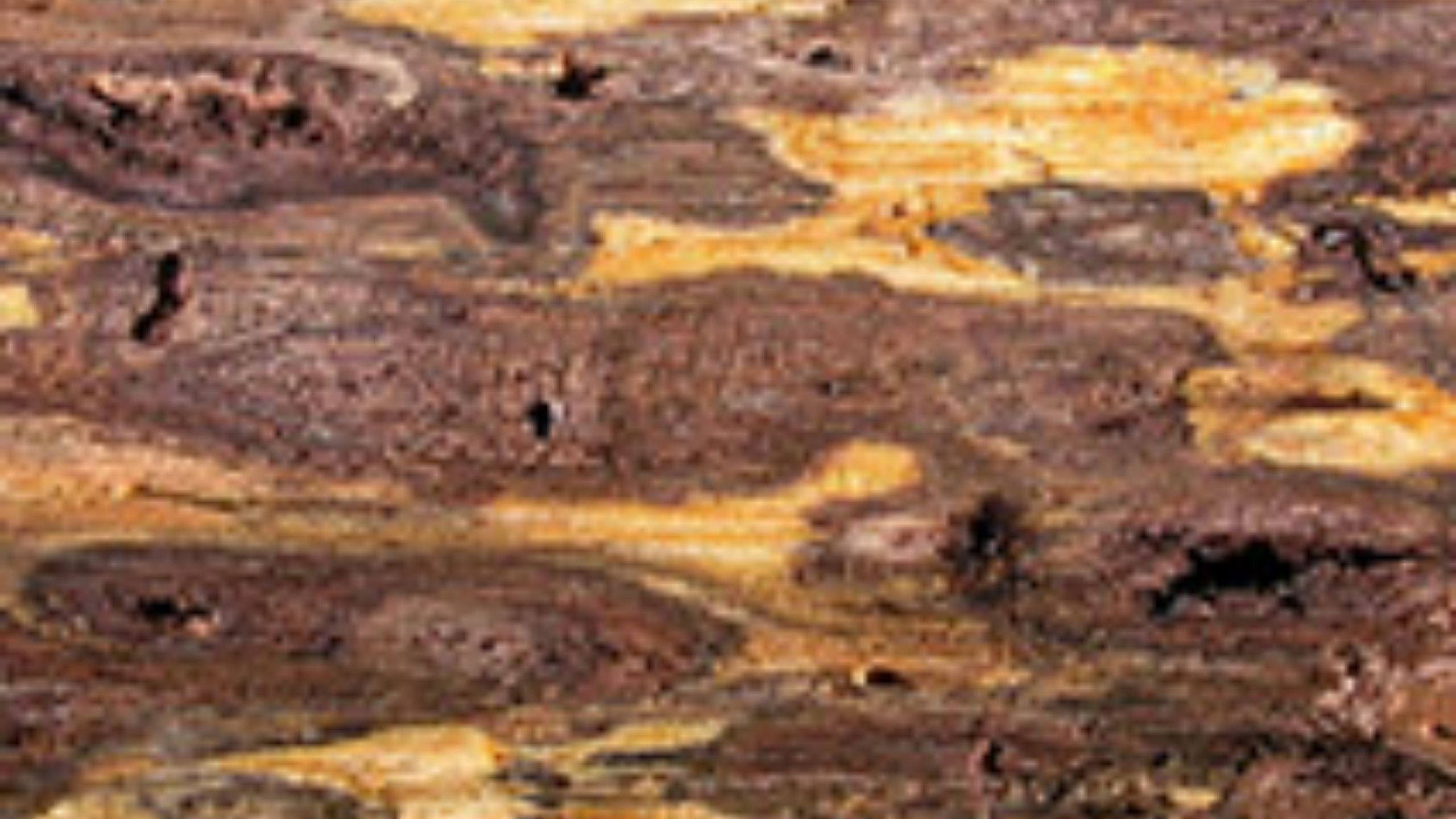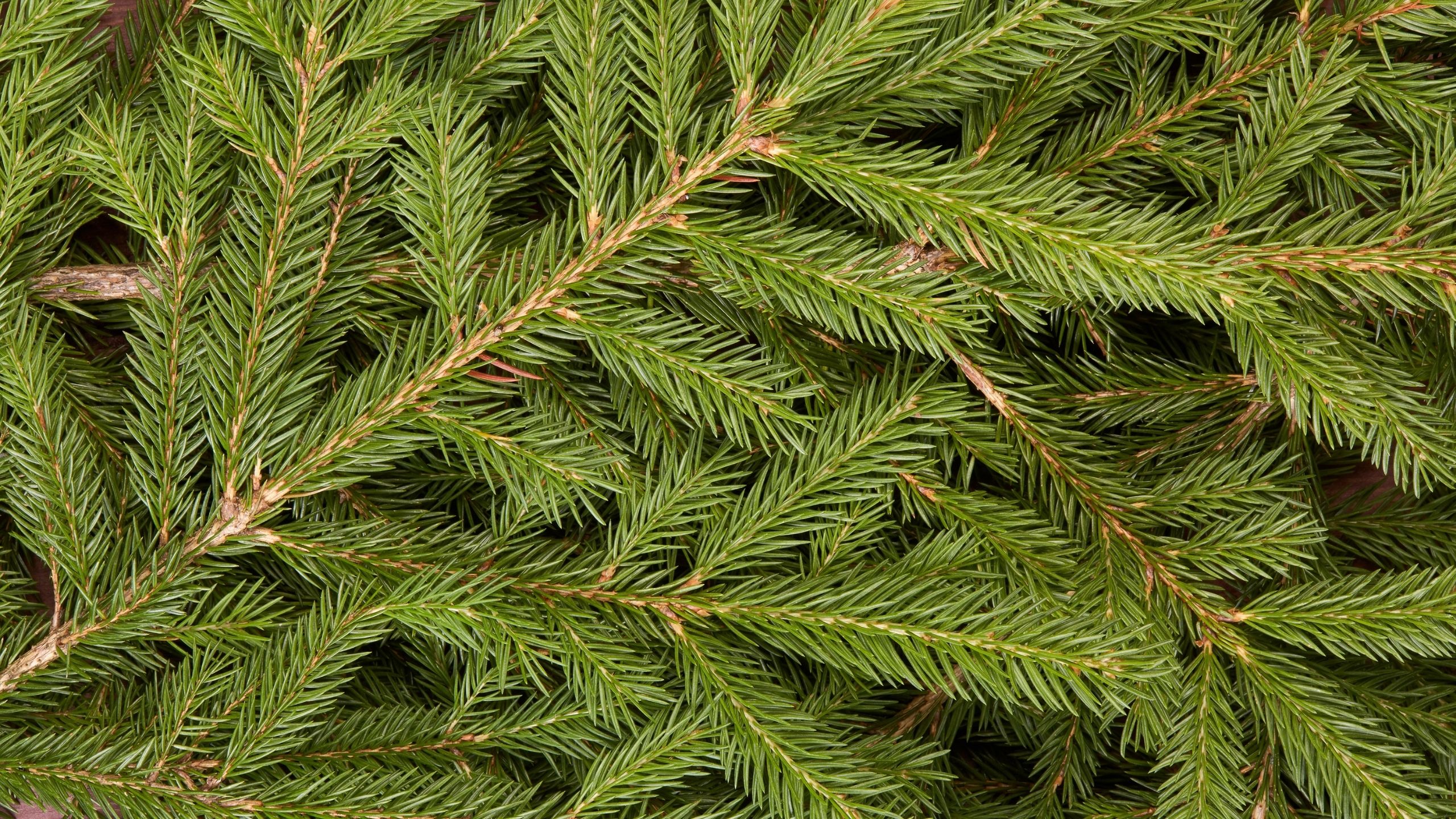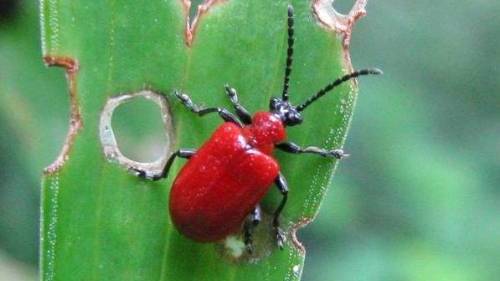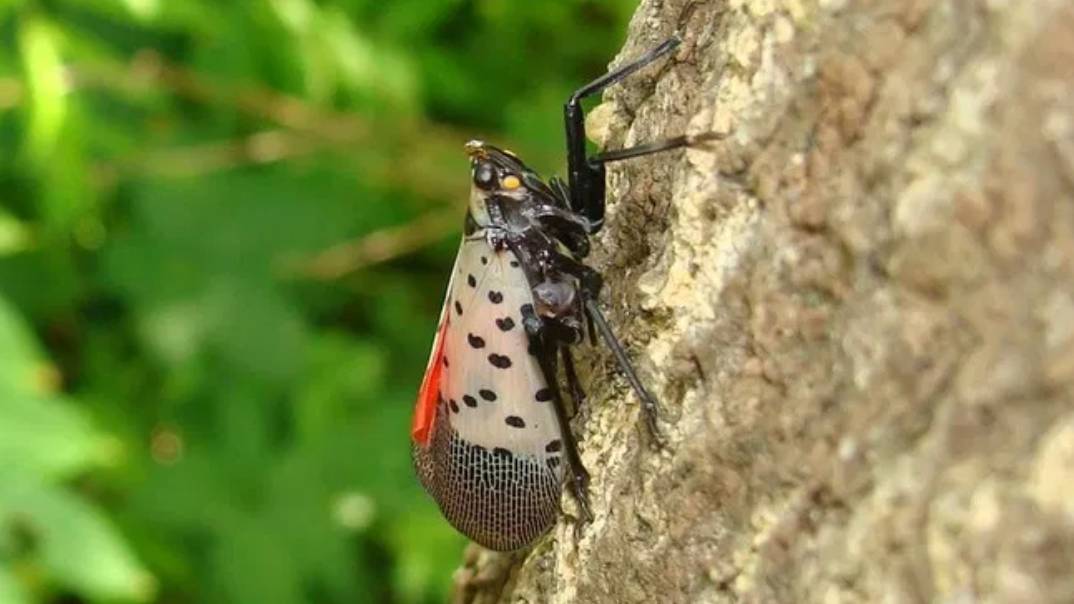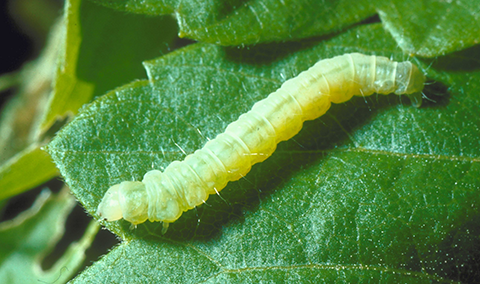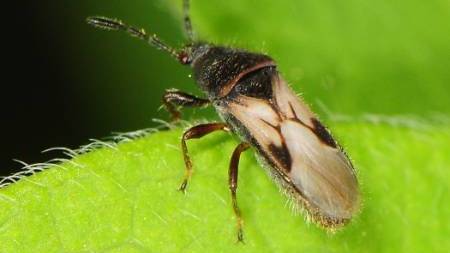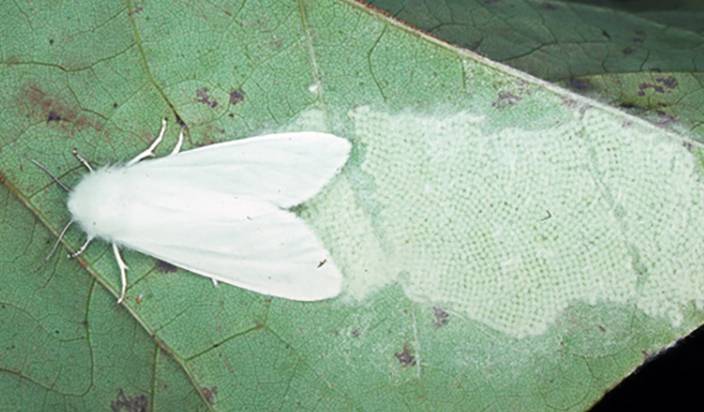Oystershell Scale
July 2019
Dr. Jay B Karren, Extension Entomologist (No Longer at USU) • Alan H. Roe, Insect Diagnostician (No Longer at USU)
Revised in 2019 by Ryan Davis, Arthropod Diagnostician (No Longer at USU)
Quick Facts
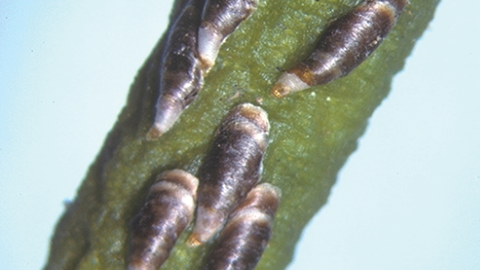
- Oystershell scale feeds on over 130 plants, but is most common on ash, aspen, maple, lilac, cottonwood, and willow in Utah.
- Commonly, oystershell scale causes localized injury to individual branches, but widespread plant injury leading to death can occur.
- Crawlers are the primary mobile life stage.
- Once settled to feed, female scales remain in place for the remainder of their lives.
- Localized scale infestations can be removed by pruning.
- Scale crawlers can be targeted with cover sprays timed with degree-day models and monitoring.
- Hard scales are most easily controlled using systemic insecticides containing Dinotefuran.
Introduction
The oystershell scale (Diaspididae Lepidosaphes ulmi) belongs to a group of insects called the armored, or hard scales. The adult insect is enclosed in a shell made up of its own shed skins and waxy secretions and resembles an oyster’s shell. Under this covering is a sac-like insect that lacks legs, eyes, and antennae. Long mouthparts are inserted in to plant tissue where they feed on individual cells.
Oystershell scale is a common pest of ash, aspen, maple, lilac, cottonwood, and willow in Utah, but it may infest over 130 plant species. Typically, damage is localized to individual branches within a tree canopy, but larger infestations, or infestations on smaller trees or shrubs, can cause dieback or death.
Oystershell scale blends in well with tree bark and often goes unnoticed until symptoms appear on their host plant. Scale “crawlers” hatch out of the eggs in late May or early June in northern Utah and spread to uninfested areas of the plant. Insecticides are often applied during this crawler stage for control, but hard scales can also be managed with systemic insecticides containing the active ingredient Dinotefuran (Safari, Zylam, Transtect).
Hosts
There are over 130 host plants recorded for oystershell scale. In Utah, common hosts include ash, aspen, cottonwood, lilac, maple, poplar, and willow. Other hosts include almond, apple, apricot, beech, birch, boxwood, cotoneaster, currant, dogwood, elm, fig, grape, horsechestnut, linden, mountain ash, pear, peony, plum, quince, raspberry, rose, sycamore, Virginia creeper, walnut, and many others.
Life History
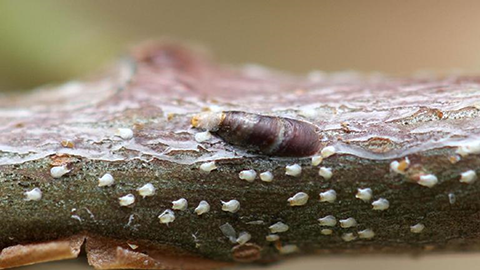
There is disagreement and/or confusion among the experts as to how many different forms of the oystershell scale there are. The most common description refers to a gray form (also known as the lilac form or the banded form) and a brown form (also known as the apple form).
There is also confusion as to the developmental characteristics of the different forms of the oystershell scale. Some authors state that there is one generation per year in the northern part of the country and two in the southern areas. Others report that the gray form has one generation per year and the brown form produces two generations. Oystershell scales in Utah apparently produce only one generation per year.
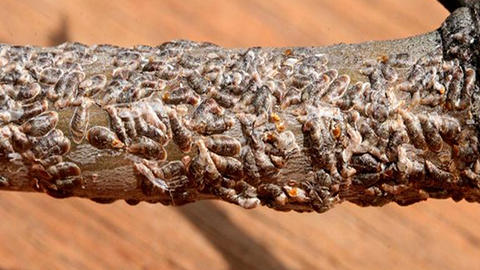
In Utah, eggs are deposited in late summer and early fall and overwinter under the female scale. Estimates of egg production range from 40 to 150 eggs per female. The females begin depositing eggs under and at the back of the scale. As egg deposition progresses, the females gradually decrease in size and move to the front of the scale. They die soon after egg-laying ceases and the eggs are left to overwinter under the old scale.
Egg hatch begins in late May or early June and continues for about two weeks. Egg hatch may occur earlier in the spring the further south one goes. If two generations are produced, depending on the area or the scale forms, the second group of crawlers is produced in August. The newly-hatched, tiny, light yellow nymphs are called “crawlers” and have functional legs. They move about over the bark for a short period of time, settle down and insert their long, thin mouthparts into the host plant, and begin to secrete the protective waxy coating. Once they settle down to feed, female scales remain in the same place for the rest of their lives. The functional legs are lost when the insect molts to the second immature life stage. The scale gradually takes on the “oystershell” appearance as it progresses through successive molts.

In the eastern part of the country, both male and female scales occur. In California only females are produced. These female scales reproduce parthenogenetically (production of young without fertilization). The oystershell scales have not been studied sufficiently in Utah to determine whether or not males are produced. The current assumption is that our scales follow the general pattern of the scales in California. In areas of the country where males are produced, they begin to mature about mid-summer. Adult females are approximately 1/8 inch long; males are somewhat smaller. The males emerge from under their scale coverings (as small yellowish-white winged insects), mate with the sedentary females, and die soon after.
Damage
Infestations generally begin on individual branches of the host. Subsequent generations form clusters around and spread out from these initial infestation sites. Heavily infested portions of the plant may become completely encrusted with scales.
The bark on infested trees may appear scaly and eventually crack. The plant will lose vigor and have a unthrifty appearance. The foliage may be off-color and abnormally small. Heavy infestations can cause decline and may eventually kill individual branches and even entire trees over a period of years.
Management
Oystershell scales are most susceptible to insecticides during their crawler stage - after the eggs have hatched, but before the nymphs have settled down and secreted the protective waxy coating. Materials should be applied when crawlers are first noticed and reapplied in about 10-14 days to provide control of late-hatching nymphs.
Crawlers can be detected by wrapping a piece of double-sided sticky tape around an infested twig in mid May. The tape should be checked every other day for the presence of crawlers. Replace the tape whenever it becomes wet or covered with dust and continue the monitoring process until egg hatch has been detected. Another method of detection is to hold a piece of white paper or a white pan under the branches and tap the branches with a stick. Any crawlers can be easily seen on the white surface. The color of the crawlers may be shades of white, yellow, orange, or purple.
In addition to monitoring for scale crawlers, degree-day models have been developed to reasonably predict the emergence of scale crawlers on the landscape. Visit the Utah TRAPS website (https://climate.usu.edu/traps/) to get accurate information for your area. Go to the website above, and follow these directions to determine oystershell scale crawler emergence dates:
• Zoom in on the interactive map.
• Select the weather station nearest to your location.
• Under “Pest” on the right side of the page, use the scrolling menu to select “Landscape and Turf” then select “Ornamental Pests”.
• Click the “Submit” button.
• Once the new page appears, scroll through the table on the page and look for “Oystershell scale”, “Crawlers begin, 1st generation” which occurs at 363 degree days. Look at the date associated with row and that is when you can expect to begin seeing oystershell scale crawlers emerging.
• Monitor closely at this time with double-sided tape, etc. and make your first crawler insecticide application when crawlers are present, followed by an additional application at 10-14, if you product’s label allows.
Insecticides for the management of oystershell scale crawlers on ornamental and landscape trees include (mode-of-action/ chemical class also given): acephate (Turf, Tree and Ornamental Spray; Orthene; 1B), azadirachtin (AzaGuard; UN), buprofezin (Talus; 16), carbaryl (Sevin; 1A), flupyradifurone (Altus; 4D), pyriproxyfen (Distance; 7C), and various horticultural oils. Additional products are available for management of oystershell scale on fruit and nut trees; inquire with your local Extension office for more information.
The systemic insecticide dinotefuran (Safari; Zylam; Transtect; 4A) can be applied as a soil drench or as a bark spray in early May to control oystershell scale. The systemic nature of the chemical, its efficacy, and ease of application make it an excellent choice for the management of hard/armored scales including oystershell scale; however, products containing dinotefuran can be expensive for homeowners. The insecticide imidacloprid will not effectively manage oystershell scale or other hard/armored scales.
If management is attempted with oils, Superior-type dormant oils applied in the spring prior to emergence can provide some suppression of scale populations. Generally, spring dormant oil applications are not as effective on oystershell scale as are crawler sprays, especially on larger trees where coverage might prove difficult.
Before using any insecticide, refer to the specific product label for a list of registered plants, application rates, application timings, techniques,restrictions, and cautions. Not all products are registered on all plants and some products will actually damage some species of plants. Check the label carefully for a list of plants that may suffer a phytotoxic reaction if the product is used. Read product labels carefully for bee toxicity and other environmental hazard warnings and instructions. Do not treat when the plant is in bloom or when bees are foraging. Always follow the information on the product label; the label is the law.
Natural enemies of oystershell scales may provide some degree of control. These include certain species of ladybird beetles (ladybugs; such as the twice-stabbed and sevenspotted varieties), parasitic wasps (Aphytis mytilaspidis and Encarsia citrina), and predatory mites (in the genera Neophyllobius and Rhyzobius).
Related Research



